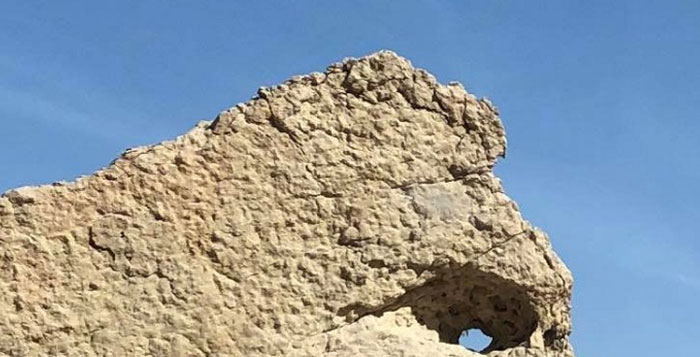Muscat: People who enjoy Oman’s outdoors will surely want to visit the White Mountains, which provide an amazing opportunity for hikers and off-road enthusiasts to explore another part of the country.
Forming the core of the Eastern Hajar Mountains, the White Mountains are also vital to the surrounding communities: the towns of Quriyat, Sur, Wadi Bani Khalid, Al Qabil, and Tahin are a few of the settlements located in their vicinity.
The slopes of this mountain range are often visited by shepherds and goatherds, who graze their flocks on the sloping terrain, and it is also part of the network of falaj systems that feed water to the surrounding agricultural lands.
Al Muathir Al Kindi, a geologist from Nizwa, often frequents the White Mountains for reasons both personal and professional. His love for hiking has seen him explore many mountain ranges in the country, while he has also led survey teams and field trips from the Geological Society of Oman and other organisations that aim to spread awareness of the country’s rich, rugged and varied landscape.
“Its apex roughly forms a geographical boundary between the governorates of North Sharqiyah, South Sharqiyah, and the southeastern edge of Muscat governorate,” said Al Kindi, who holds a Master of Science in geology from Royal Holloway University. “It reaches elevations as high as 2,216 metres at its highest peak, Jebel Khadar, which is different to the well-known Jebel Akhdar.”
“The terrain largely comprises a plateau with extensive elevated space, cross-cut by the canyons of significant wadis draining from the mountains,” he added. “This is definitely a good destination for hikers and adventurers, because it has some natural paths for shepherds, which are used by hikers to climb up the mountain slopes. When the weather is pleasant, walking on the plateau on top of the mountain range is an amazing experience.”
“However, if you want to take an automobile up the mountain, it is not advisable, because the mountain is rather rugged and has extremely steep slopes, said Al Kindi, who works in the country’s oil and gas industry. “If you aren’t a skilled driver who does not know how to handle a four-wheel drive, you are posing a very big risk to your safety if you try to drive up the mountain.”
Al Muathir’s specialisation as a geologist puts him in a unique position to analyse the composition and formation of the White Mountains, which get their name because they are composed largely of limestone.
Those limestone layers, he says, were formed during the Paleocene epoch, a few million years after the milestone event of the dinosaurs’ extinction, some 65 million years ago, and the Eocene period, about 40 million years ago, when the tract of land over which the mountains currently stand didn’t even exist: this instead was an area filled with seawater, where corals, shellfish, and other marine creatures thrived in the conditions currently present in the seas off Oman’s coastline.
These areas became elevated much later, he adds, just like other mountains in Oman, which share many similarities with Jebel Khadar. These ranges, for one, are extremely resistant to soil erosion, because of their ridge-like terrain, steep slopes, and elevated plateaus.
“However, the key difference between the White Mountains in the Eastern Hajar Mountain range and the Jebel Akhdar or Jebel Shams range in the Western section is their geological age,” Al Kindi explained. “The rock formations in here are considered young in geological terms, whereas those found in the elevated mountains of the west were formed even earlier, mostly during the Mesozoic era that is well-known to be the age of dinosaurs.”
Although the mountain is abundant in limestone, Al Kindi says extracting them is not very economically viable, in addition to a number of other challenges presented by companies that attempt to quarry it.
“The terrain means it is too difficult and too costly to transport the required machinery,” he said. “Another aspect that discourages mining is the unique environment worth preserving. A good resource from the region would be agricultural products: if the flat stretches of elevated land are cultivated, their cooler climate would be suitable for Mediterranean fruits as of those planted in Jebel Akhdar.”
“One of the challenges for this project, however, is the scarcity of water but this could be overcome by pumping it from desalination plants by the coast, or even from the already-available freshwater reservoir of Wadi Dhayqah dam that is relatively close,” explained Al Kindi.
